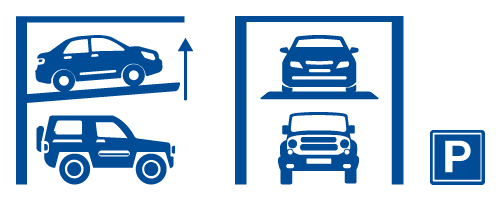Congestion levy - parking space for multiple motor vehicles
Ruling number: CL-001
Ruling history
| Ruling number | CL-001 |
|---|---|
| Status | Current |
| Issue date | 01 February 2021 |
| Issued by | Commissioner of State Revenue |
This ruling applies retrospectively and prospectively in accordance with Revenue Ruling GEN-001 - Explanations and status of revenue rulings.
This ruling confirms the Commissioner of State Revenue's long standing treatment of parking spaces which allow the parking of multiple motor vehicles. It is subject to Revenue Ruling GEN-014 - Assessments and periods of retrospectivity, which limits the retrospectivity period.
Preamble
The Congestion Levy Act 2005 (the CL Act) imposes a levy on leviable parking spaces in a private or public car park within the specified areas of Melbourne’s central business district and surrounding suburbs. The purpose of the levy is to reduce traffic congestion in these levy areas.
Parking space is defined in section 3(1) of the CL Act as:
- a space set aside for the parking of a motor vehicle, whether or not the space is used for the parking of a motor vehicle and whether or not the space is permanently delineated as such, or
- a space used for the parking of a motor vehicle, whether or not the space is permanently delineated as such,
but does not include a space that is part of the carriageway of any street, road or lane open to or used by the public.
Where premises contain parking spaces that are not permanently delineated, section 5(1) of the CL Act provides a legislative formula to calculate the number of parking spaces in the unmarked premises. The formula takes the total surface area and divides it by 25.2 square metres, disregarding any remainder.
The calculated number of unmarked parking spaces is in addition to any spaces that are permanently delineated (section 5(2) of the CL Act). For the purpose of the CL Act, a sign or temporary barrier purporting to indicate that a space is not a parking space is not of itself evidence that the space is not a parking space. The word ‘space’ is not defined and can be taken to mean space above ground as well as on the ground.
This ruling explains how to determine, for the purpose of the CL Act, the number of parking spaces where a space allows parking of multiple motor vehicles in a public or private car park. These considerations are provided as a guide only and are not exhaustive. If your circumstances are not covered in this ruling, please apply for a private ruling in accordance with Revenue Ruling GEN-009v3 – General Information on Private Rulings.
Ruling
Generally, in the case of premises with parking spaces that are clearly and permanently delineated (e.g. line-marked or distinctly identifiable in any other respect from other parking spaces on the premises), the number of parking spaces is taken to be the number of parking spaces that are individually delineated.
Some parking spaces in a car park may be designed to allow the parking of multiple motor vehicles in each space via the use of an automated parking system. The number of parking spaces in that space is the maximum number of vehicles it is designed to hold.
For example, a parking space that has an apparatus designed to allow two or more vehicles to be parked one above the other is commonly known as stacked parking. In a stacked parking system, each compartment designed to hold a motor vehicle is a space set aside or used for the parking of a motor vehicle for the purpose of the CL Act.
Example 1
A car park has an apparatus designed to allow two motor vehicles to park vertically as shown in the diagram below. For the purpose of the CL Act, the number of parking spaces that have been set aside or used for the parking of a motor vehicle is two.

A delineated parking space that allows multiple motor vehicles to park horizontally one after the other is commonly known as ‘nose-to-tail’ parking. For the purpose of the CL Act, the number of parking spaces in such a delineated space should be taken to be the maximum number of motor vehicles designed for that space to hold.
Example 2
A car park has marked spaces designed to allow two motor vehicles to park in each space. For the purpose of the CL Act, the number of parking spaces in each delineated space is taken to be two.

Disclaimer
Rulings do not have the force of law. Each decision made by the State Revenue Office is made on the merits of each individual case having regard to any relevant ruling. All rulings must be read subject to Revenue Ruling GEN-001.
